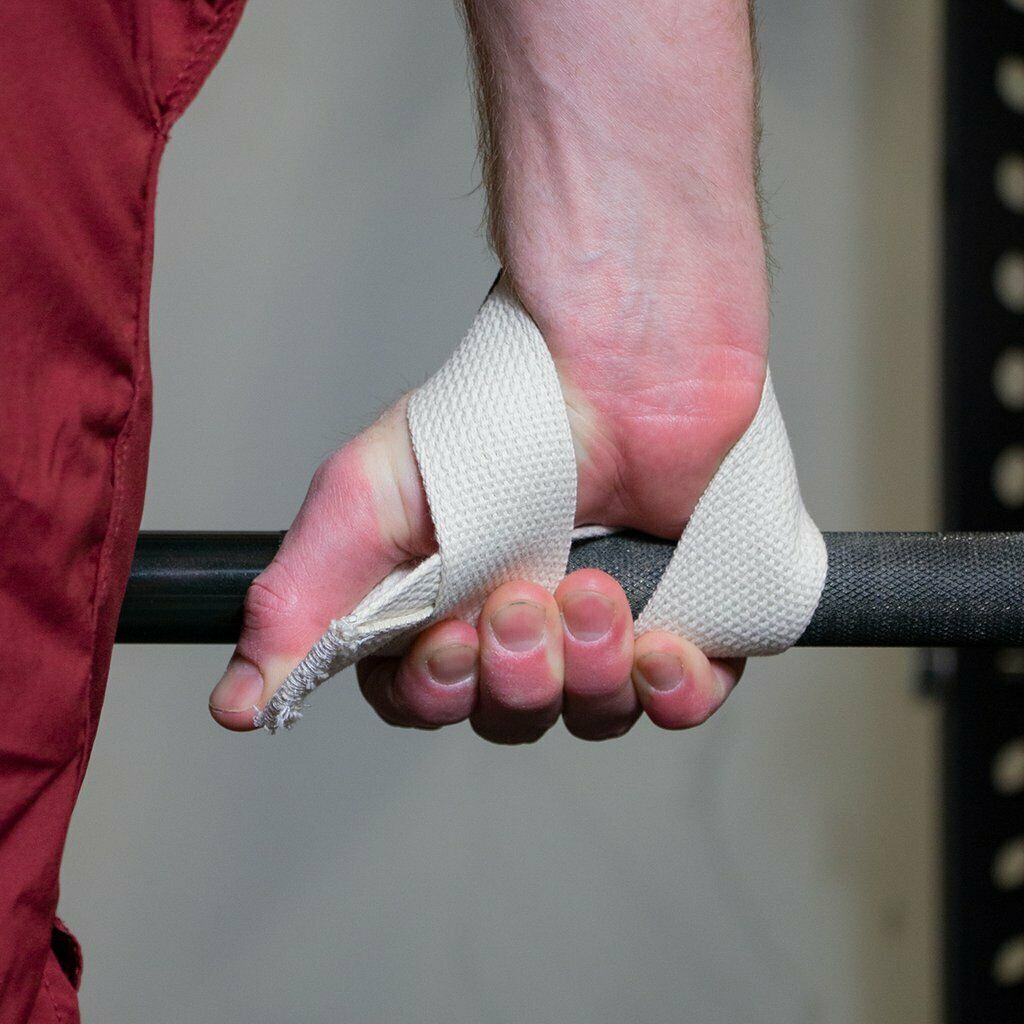-40%
Serious Steel Olympic Weightlifting Straps
$ 8.39
- Description
- Size Guide
Description
OLYMPIC LIFTING STRAPSOlympic lifting straps are
ideal for Olympic lifts
such as snatches but can also be used for snatch grip deadlifts, deadlifts and pulls.
Olympic straps are an
all around great lifting strap that can be used in nearly every lifting application.
Oly straps are
similar to speed straps
but have a longer sewn end
.
COTTON OLYMPIC STRAPS
Softer feel.
Great for high rep work .
Will not last as long as nylon webbed Olympic straps.
Slightly more grippy
SPECIFICATIONS
Length:
9.25"
Width:
1.5"
Opening:
5.5"
NOTE
that the end piece should
lay in the same direction as your thumb
and not across the palm.
This allows for the strap to
lay flat and more securely on the bar.
Once on, spin the bar to torque down the strap, however not overly tight. You still want to have flexion in the wrist, especially with Olympic movements.
3 Styles Available!
Traditional lifting straps are ideal to help build strength. These are also the preferred strap for deadlifts and pulls. Additionally, these are not good for Olympic lifts such as snatches due to set-up and size.
Simply slide your hand through the looped end. (Note that the long end of the strap should angle towards your thumb) Once on, simply wrap the long end around the barbell until tight.
Axle lifting straps are ideal for thick bars, strongman training, and those who prefer long straps. These straps a made with extremely durable and heavy duty webbed cotton, they won’t let you down! These adjustable wrist straps have an overall length of 26.5” and a width of 1.75".
Olympic lifting straps are ideal for Olympic lifts such as snatches, but can also be used for snatch grip deadlifts, deadlifts and pulls. Olympic straps are an all around great lifting strap that can be used in nearly every lifting application.
Oly straps are similar to speed straps but have a longer sewn end. Note that the end piece should lay in the same direction as your thumb and not across the palm. This allows for the strap to lay flat and more securely on the bar. Once on, spin the bar to torque down the strap, however not overly tight. You still want to have flexion in the wrist, especially with Olympic movements.












